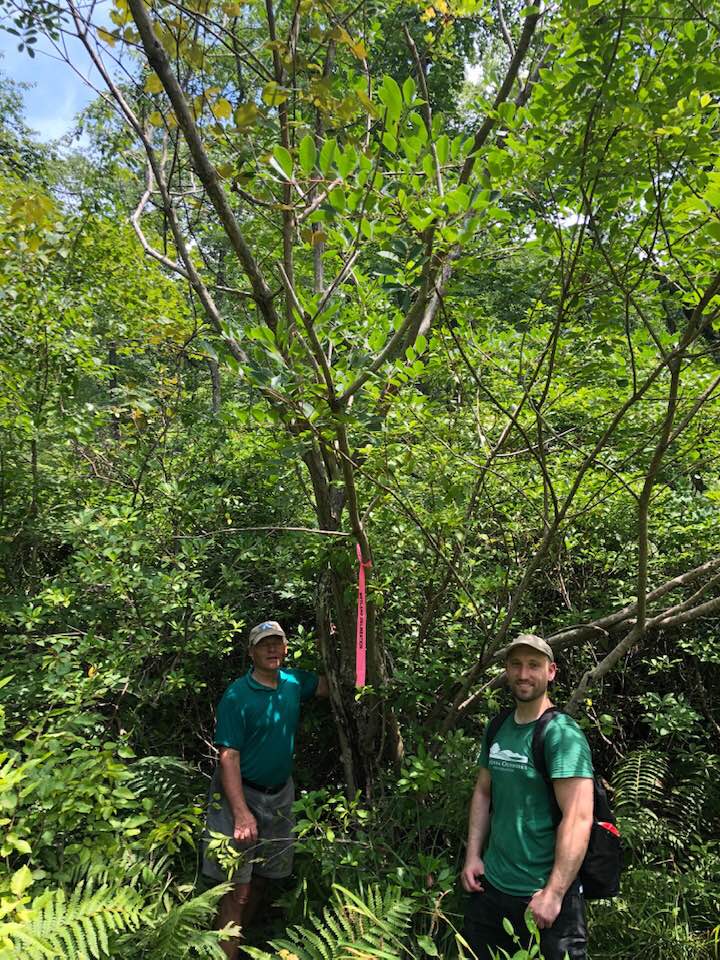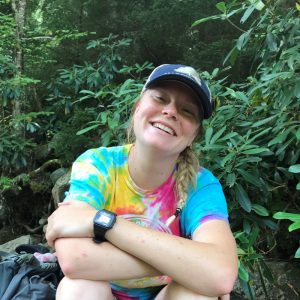
‘Big Tree Hunters’, Byron Carmean and Gary Williamson, ventured up to spend some time with VOF and DCR-DNH staff last week. While visiting our Preserve, they were able to find and record a new co-State Champion poison sumac (Toxicodendron vernix) tree!
As Gary Williamson noted, poison sumac inhabits wetland bogs and is a very uncommon tree in Virginia. The poison sumac is a woody shrub or tree, growing roughly from 5 to 20ft. It has compound leaves that have the characteristic smooth, reddish stalk making it easily identifiable from other sumac varieties. It has generally 7 to 13 smooth-edged, oblong leaflets that are opposite from each other. Its berries hang in loose clusters, green in spring and summer and turning white as fall and winter arrive. The leaves turn a vibrant red in winter. These trees are related to the more commonly seen poison ivies and poison oaks, and cause the same outbreak associated with poison ivy and oak from the rash-causing agent, urushiol.
With a diameter-at-breast-height at about 18in and roughly 30ft tall, we are thrilled that we can claim that we are protecting one of the state’s largest examples! This may sound like a small tree for being a state champion, but poison sumac trees don’t usually get much taller than this! This specimen is not the lone poison sumac in the preserve, and quite a bit of measuring had to be done to find our biggest tree of this species. Our efforts at the preserve are first and foremost to protecting the native biodiversity of Virginia and being able to provide and manage suitable habitat for large, healthy, uncommon trees is a great benefit.

Why protec this tree??? Does it have any redeeming qualities??? I think I just tangle with a small bush an came out a looser. I am miserable and wondering how to rid my yard of its presence?
You may be confusing it with tree of heaven, which is a highly invasive exotic species. Poison sumac is rarer and generally lives in and around wetlands.
I discovered poison sumac on the side of my house. I live in South Eastern Louisiana so of course there are a lot of marshy wetlands, but I do live in the city of New Orleans. I do however live near a bayou. Just wondering how this could possibly get into my flower beds. Fortunately, I realized as soon as I was “stung” and was able to wash and treat it immediately. Still scary how it could just pop up like that….
Comments are closed.